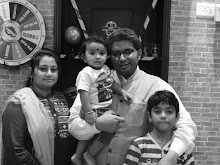Like me, most of our generation has grown
knowing Ramayana through the directorial efforts of Ramanand Sagar. With further learning, we came to know that it
was based out of Valmiki’s Ramayana. India has been a mystical country
particularly in the domain of scriptures. With further learning we come to know
that we do have many Ramayanas. Noted author, A K Ramanujam in his celebrated book,
“Three Hundred Ramayanas: Five Examples and Three Thoughts on Translations”
goes on to claim that we do have atleast three hundred Ramayanas written in various
Indian languages and written over different periods of time. Among many, we do
have “Paumacariya Ramayana” written by Jain monk Vimalasuri. This is one of the
seventeen different Jain Ramayanas available for perusal. Though it is written
in Prakrit language, the Sanskrit name for this text is Padmacharita referring
to the “Life of Rama”. Lord Rama is mostly described as Padma in Jain
literature alluding to the fact that his eyes were beautiful as lotus petals
and hence his face was similar to a full-bloomed lotus flower.
Before we delve further into Paumacariya
Ramayana, it is essential to show the right place of Rama in Jain thoughts.
According to Jainism, there are sixty-three eminent people and they are twenty-four Tirthankaras, twelve Chakravartis, nine Balabhadras, nine Vasudevas and nine Prativasudevas. Rama is one Balabhadra,
Lakshmaan is one Vasudeva and Ravana is one Prativasudeva. It is to be noted
out here that each of the Balabhadra will have a step-brother in Vasudeva; both
of them would be inseparable and there would be an anti-hero in the form of
Pratisudeva. Each of the pair of Balabhadra and Vasudeva would rule half of the
area of a Chakravarti. One such triad is Rama, Lakshmaan and Ravana.
Some of the stark
differences that are observed in Paumacariya Ramayana in comparison to Valmiki Ramayana are as follows:
1 Ravana is described as a pious, handsome and
just ruler who was busy in austerities. His only weakness was that of Sita. The
clan of Rakshasas are mentioned to be highly civilised with super-natural
qualities and Ravana was their king belonging to the lineage of Meghavahanas.
This finds proof in the inscriptions of King Kharavela in modern day’s Odisha.
2 Sita is born naturally to Janaka and Videha
unlike the Earth and farming linkage. She also has a twin brother namely
Bhamandala.
3 Kaikeyi is shown as a sympathetic mother who
asks for Bharat’s coronation as she was afraid that Bharat would become Jain
monk renouncing the princely world. Rama voluntarily chose to go to exile as
he knew very well that Bharat would not accept the throne when Rama was around.
4 It was Lakshmaan
who killed Ravana and not Rama.
5 There is no
reference of golden deer to trap Sita. Instead, we do have Lakshmaan’s voice
being used by Ravana to distract Sita.
These are some of
the minor differences. But this Jain Ramayana is rooted with Jain values and
morality. The tale is too divergent from the Valmiki’s version. The last
statement stems from the very fact that Paumacariya showcases all its characters as human
beings rather than divine characters.



















